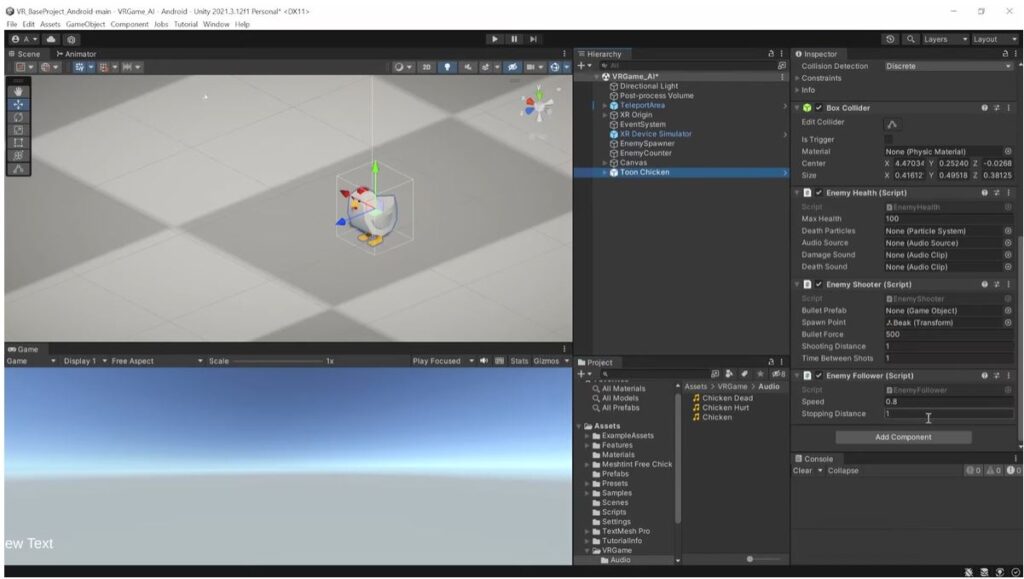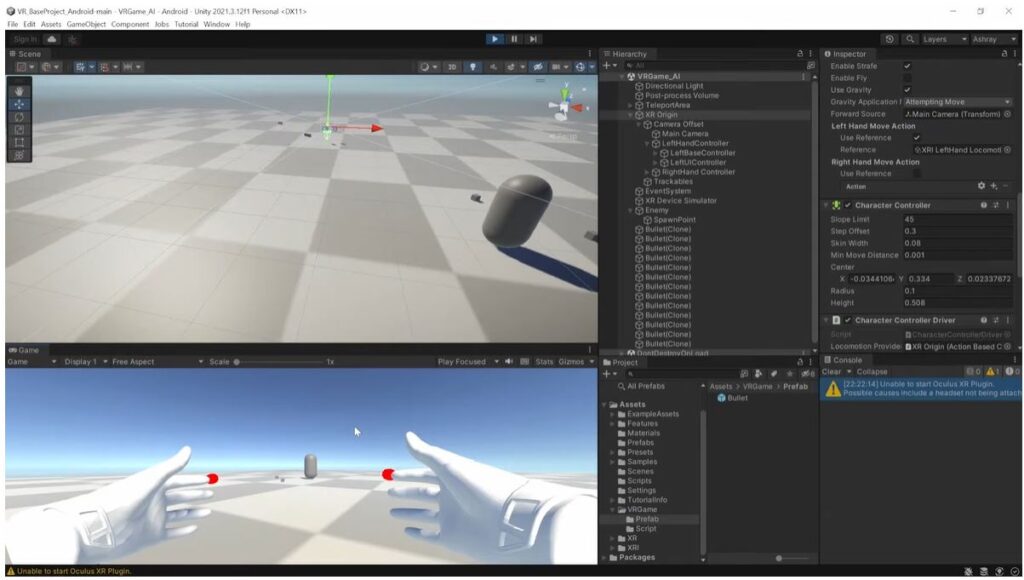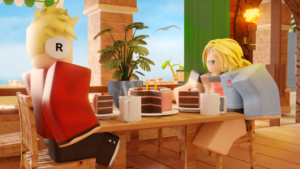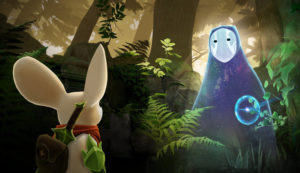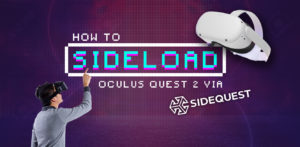The subject of natural language processing has been completely transformed by the language model known as ChatGPT, or Generative Pre-trained Transformer. OpenAI’s ChatGPT, which can produce responses that resemble those of humans when given text inputs, has been employed in a wide range of applications, including chatbots and automated content creation. Today though, we want to explore the uses and benefits of ChatGPT when developing VR games.
The potential of ChatGPT to improve virtual reality (VR) gaming experiences is one of the most fascinating and intriguing applications of the technology. Developers can create more immersive and interesting gaming worlds that feel alive and responsive to players’ activities by utilizing the model’s capacity to generate realistic and dynamic conversation.
We’ll look into how ChatGPT can be used to create VR games in this post, along with the intriguing prospects this technology offers for the future of gaming.
ChatGPT’s Specialized Skills
ChatGPT is exceptional in its capacity to comprehend text inputs and produce responses that resemble those of humans. The model has already been pre-trained using a sizable collection of text data, enabling it to pick up on the grammatical patterns and structures of human language. This means that ChatGPT can produce an answer that is both grammatically accurate and semantically meaningful in response to a prompt or query.
ChatGPT’s scale and complexity set it apart from other language models. One of the most complicated machine learning models ever made, the GPT-3 model’s largest version has over 175 billion parameters. This enables ChatGPT to produce comments that are not only very inventive and creative but also comprehensible.
What ChatGPT Can Do to Improve VR Gaming
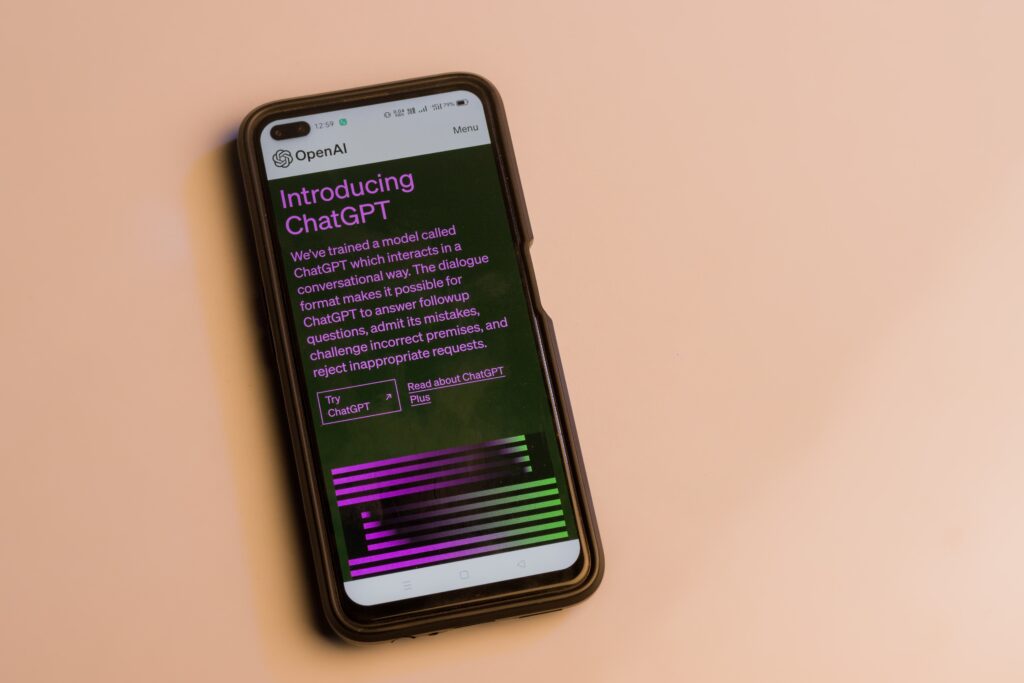
With improvements in visuals, sound, and tactile feedback, virtual reality game environments have become more immersive and lifelike in recent years. However, the ability to generate believable and interesting non-player characters (NPCs) is one area where VR gaming still has room for improvement. Quality inventive scripts can be the difference between believable and schlocky!
NPCs are an integral component of any game world since they offer players social interactions, information, and objectives. Traditional NPC dialogue systems, on the other hand, frequently come across as static and programmed, with few opportunities for player involvement. As a result, the game world may feel less lively and responsive and immersion may be broken.
Developers can make more realistic and captivating game worlds that feel alive and sensitive to players’ activities by using ChatGPT to produce NPC dialogue. NPCs can adapt to the player’s decisions and provide a more individualized gaming experience by responding to player interaction with dynamic and context-aware responses thanks to ChatGPT.
Think of experiencing a VR game in a castle from the Middle Ages. You come across a helpful NPC who welcomes you and gives you a quest while you explore the castle. The NPC may present you with a pre-written list of dialogue options in a standard NPC dialogue system, such as “I have a task for you” or “Are you interested in helping me?” With ChatGPT, though, the NPC could produce a dynamic response based on your prior game decisions and activities. For instance, if you had previously finished a task of a similar nature, the NPC might have said, “Ah, I see you’re an experienced adventurer. Could you perhaps assist me with a more difficult task?”
This form of dynamic and context-sensitive dialogue can produce a considerably more individualized and immersive gaming experience by giving players a sense of being fully integrated into the game’s universe. If interactions are more natural and lifelike, then it’s easier to stay immersed in VR.
Opportunities and Challenges
While ChatGPT has a lot of promise to improve VR gaming and video gaming on the whole, there are still obstacles and things that developers need to take into account. The computational expense of using the model is one of the main obstacles. As a highly complicated model that uses a lot of computational power to operate, ChatGPT can be too expensive for smaller game studios or independent producers.
The potential for biased or incorrect content generation presents another difficulty. A sizable databank of text data, some of which may be biased or objectionable, is used to train the ChatGPT. The model must not provide offensive or inappropriate stuff in the games, thus developers must be careful. Additionally, there is a chance of unintended effects if players enter offensive or damaging words because the model develops reactions based on the input it gets. Moderation and vigilance from human developers may be required.
Despite these obstacles, there are a lot of chances to use ChatGPT in VR gaming. The model has the power to completely transform NPC dialogue systems, resulting in more dynamic, immersive, and engaging gaming environments. In-game text such as item descriptions, dialogue from quests, and even narrative may also be generated using ChatGPT, which would lessen the burden on developers and enable the creation of additional content more quickly.
Utilizing ChatGPT to produce procedurally generated game content is a promising area of development. With procedural generation, game content is produced algorithmically rather than by programmers by hand. In addition to making game settings indefinitely replayable, this can lighten the burden on content creators.
Developers can construct game worlds that are different for each player by using ChatGPT to produce procedurally generated dialogue, quests, and other in-game content, offering limitless replayability and producing a more immersive and engaging gaming experience.
Using ChatGPT to Produce Procedurally Generated Game Content
A common method in game creation for producing dynamic, constantly changing game content is procedural generation. Game creators can give users individualized gameplay experiences by utilizing algorithms to produce game material including stages, characters, and weapons. The procedurally generated game content that may be produced using ChatGPT, the natural language processing technology created by OpenAI, gives the gaming experience a new depth.
Procedural Generation: What Is It?
The process of producing game material through procedural generation involves employing algorithms. Developers can create dynamic, unpredictable content by using procedural generation rather than painstakingly developing every element of a game. Characters, weapons, and other game components can be created using procedural generation.
Procedural generation gives endless replayability, offers distinctive gameplay experiences, and lessens the effort of game producers by removing the need for manual game creation.
Pros and Cons of Procedurally Generated Game Content
The ability to provide players with distinctive gameplay experiences is one of the key advantages of randomly generated game material. Each playtime can be unique thanks to the use of algorithms in the creation of the game’s content, which increases the game’s replayability. This is especially helpful for open-world games where players can explore and find fresh material each time they play.
Since procedural generation frees creators from having to manually create every part of the game, it can also lighten their workload. To build the game material, developers can instead use algorithms, freeing up time to work on the game’s other features.
Several VR Game Examples with Procedurally Generated Content
The usage of ChatGPT to provide procedurally generated game content in VR games gives the playing experience a new depth. For instance, randomized game stuff, including weapons or goods, can be created using ChatGPT. As an illustration, ChatGPT might be trained on a library of weapons and given the assignment of developing new, distinctive weapons that are balanced and appropriate for the game’s features.
Additionally, the game’s stages might be randomly generated using ChatGPT. Developers may create an endless number of levels that offer different gameplay experiences for users by teaching ChatGPT the fundamentals of level design, such as balance and pacing. New maps can be built on the fly giving players a new experience every time they load up a new game.
Procedurally Generated Game Content: Issues and Solutions
Procedural generation has numerous advantages, but there are also difficulties to take into account. Making sure the generated content is balanced and appropriate for the game’s dynamics is one challenge. The gameplay experience may suffer if the generated content is unbalanced, and gamers may become frustrated.
Making sure the generated content is aesthetically pleasing and complements the game’s art style is another problem. The overall experience may suffer if the created content does not adhere to the visual aesthetic.
The replayability of a game can be increased via procedurally generated game content, which can also lighten the load on game producers. The usage of ChatGPT to provide procedurally generated game content in VR games gives the playing experience a new depth. Although there are difficulties to take into account, such as ensuring balance and aesthetic appeal, procedural generation is a good technique for developers to investigate.
Overall
This fascinating and powerful ChatGPT technology can completely change the VR gaming industry. That is a fact! Developers can create more immersive and interesting gaming worlds that feel alive and responsive to players’ activities by utilizing the model’s capacity to generate realistic and dynamic conversation.
The prospects for employing ChatGPT in VR gaming are tremendous, despite the difficulties and factors that developers must take into account. The model might produce in-game text, improve NPC chat systems, and even provide procedurally generated game material.
We may anticipate seeing much more fascinating uses of ChatGPT and other language models in the gaming industry and elsewhere as the field of natural language processing develops. Recently we’ve even seen an up-and-coming YouTube channel use ChatGPT to help write their code
YouTuber’s Journey (Immersive Insiders)
- Screenshot from immersive insiders YouTube
- Screenshot from immersive insiders YouTube
Using AI, the immersive insiders group was able to quickly create a VR game. He opened ChatGPT and asked it if it could help create a VR game using the Unity software and it provided a list of steps for him to follow. These steps were to help set up a Unity project for VR although it took numerous attempts and precise keyword prompts to get the tailored help the YouTuber needed. He wanted to use the XR interaction toolkit package and ChatGPT after several attempts to generate a list of steps which included a sample scene with all the controls and Locomotion setup.
Using these generated steps and projects, he had the perfect jumping-off point and was ready to start with the game development. First, he wanted a script for a lot of the players to shoot with but the script generated by AI used the generic input system initially. He then asked it to update the script to use the input action reference instead then he copied the code into a script in Unity, created the bullet prefabs, added the components, and tested it.
Next, with ChatGPT’s help he generated a script that would make the enemies follow the player. He then created a temporary anime object to test the script and four updates later he finally got it to work in the way he wanted it to. Now it was time for the enemies to shoot the player once it gets close to it. He went back to ChatGPT and updated his script up till this point, he had a player who could shoot and an enemy that would follow the player and shoot it when it got too close.
He then generated another script to manage the player’s Health manage enemy’s Health, apply bullet damage on enemies at random locations, and update the kill count. His project continued to completion and you can check out his results on the link above. The merging of ChatGPT and the developer’s ideas at every step is fascinating to explore. With hand holding, it’s possible for even the most basic of coders or programmers to bring their ideas to life. ChatGPT is capable with a little tinkering to do the heavy lifting on gaming projects like this and it seems that the potential for the future is endless.
When you combine its ability to generate adaptable scripts and power its shows to produce code, it would seem that ChatGPT could become a very valuable resource for future VR game developers out there!
Pro Tips on How To Use ChatGPT To Create VR Games
Begin Modestly
Although ChatGPT is a strong technology, it may also be resource- and complexity-intensive. Before moving on to more complex applications, start by experimenting with straightforward NPC dialogue systems or in-game text production.
Train On Relevant Data
It’s crucial to train ChatGPT on relevant data in order to produce context-aware and pertinent responses. This might contain text seen in games, such as conversation or narrative, or it might even be user-generated material from forums or social media.
As with any AI technology, there are ethical aspects to take into account when utilizing ChatGPT. Take precautions to make sure the model is producing suitable and inclusive material while being conscious of the possibility of prejudice or incorrect content development.
When incorporating ChatGPT into a game, it’s important to optimize for performance because it might be computationally expensive. To lessen the computational demand, take into account methods like model compression or caching.
Iterate and Improve
ChatGPT development is an iterative process. To continuously enhance the NPC dialogue systems or in-game text production, test and develop your models while gathering player input.
By utilizing ChatGPT to its full potential, developers may produce more realistic and compelling VR gaming experiences.
FAQ on The Use of ChatGPT to Create VR Games
ChatGPT: What is it?
OpenAI created ChatGPT, a natural language processing system. Based on the input it gets, it creates genuine and dynamic dialogue using deep learning algorithms.
How is ChatGPT applicable to VR gaming?
ChatGPT can be used to produce in-game text, procedurally generated game content, and more interesting and immersive NPC chat systems.
Are there any moral ramifications of using ChatGPT for virtual reality gaming?
Yes, there are moral issues to think about when using ChatGPT for virtual reality gaming. The requirement to make sure the model is producing acceptable and inclusive material is one of them. Another is the possibility of bias or incorrect content development.
How can I prepare ChatGPT for use in VR games?
Use relevant data, such as game-related text or user-generated information from forums or social media, to train ChatGPT for VR gaming apps.
How can I enhance ChatGPT’s functionality in VR gaming applications?
By employing methods like model compression or caching to lessen the computational load, you can improve ChatGPT’s performance in VR gaming apps.
What are any expert recommendations for utilizing ChatGPT to create VR games?
Expert advice for utilizing ChatGPT to create VR games includes starting small, thinking about moral ramifications, performance optimization, and iterating and improving your models based on user feedback.
